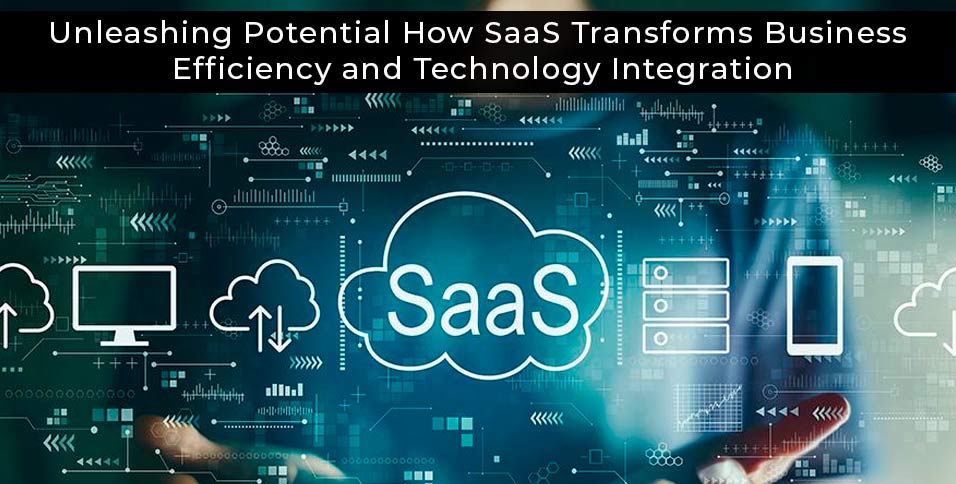Therefore, SaaS is not merely a tool but an enabler that various small and big firms have adopted to work smarter, faster and cheaper. In the vast field of new generation technologies, SaaS has a place of offering application Web services since complex soft and hard handling is avoided. Due to the increase in demand for more robust and easy-to-manage instruments, it has greatly increased. In this sense, this movement is remapping the frontiers of creation and the use of technology in the marketplace or how technology is sold.
The Architecture of SaaS Platforms
The molecular structure of software platforms must accommodate the main idea that makes them reliable, scalable, and application delivery is another bible. Another aspect when realizing multi-tenant, CE, and network-based service offerings is software platform delivery. Software platforms are also suitable for organizations where expansion and adjustment are easy and their performance is satisfactory.
How SaaS systems and APIs interact
APIs are essential to today’s SaaS architectures as a connector linking one software application to another to give consumers a uniform and coherent experience. They deliver the services to varying extent and cordial the tasks in the related systems. This integration serves as the basis for large-scale digital topologies and is fundamental to improving the efficiency of SaaS solutions.
The role of Maximo API in enhancing SaaS functionality
The Maximo API adds further value to SaaS platforms to optimize asset management. It assists in tracking assets from acquisition to disposal and includes such important data in integrated systems. Besides, it envisages and optimizes the decision-making enablers inherently required for efficient asset management and is useful in reducing the burden in related activities for effective operations and costs.
SaaS Market Growth and Trends
For instance, the SaaS segment has particularly grown tremendously, because the demand for more flexible and relatively inexpensive offers is continuously rising. Today it has a large share of the world market in the cloud as businesses spend billions yearly on it. Clients incorporate SaaS technology and work in various industries like finance, health, and education.
Predicting future trends
- Increased AI Integration: Artificial intelligence will continue to be integrated into SaaS products, making them smarter and more adaptive to user needs.
- Greater Emphasis on Security: As threats evolve, so will SaaS security measures, focusing more on advanced, predictive security protocols.
- Expanding into New Markets: SaaS will penetrate emerging markets and industries where digital transformation is just beginning to take root.
Security Measures in SaaS Applications
However, it is important to remember that SaaS data protection is very important. The providers utilize security measures such as end-to-end encryption, in-transit and data-at-rest encryption, and secure data handling protocols. Security checks and IT vulnerability tests are common practices that ensure that such an incident will not happen. Furthermore, data management practices such as data duplication guarantee data access even in the case of physical equipment crashes and other calamities.
Compliance with global security standards
SaaS vendors must comply with several regulations, including GDPR, HIPAA, and SOC2. These regulations require a strict code of practice for handling and protecting users’ data to ensure privacy. The availability of legal protocols is not only a subscription to users’ trust and the safety of the foundations on which most SaaS platforms are based.
User identity and access management
IAM systems are important for securing access to these SaaS applications. These systems employ user rights and authentication processes to help govern and regulate user identities and resource availability. Some common features that improve security and provide users with utility include MFA, RBC, and SSO.
SaaS and Business Efficiency
SaaS solutions stand out by centralizing processes by automating tasks and linking them throughout key organizational areas. This integration means there is information sharing between these two systems without duplication and less chance of wrongly copying data. Therefore, it makes it easier for businesses to perform strategic activities at the expense of several routine operations, thus increasing productivity.
Cost reduction strategies
- Reduced IT Infrastructure: SaaS lowers capital costs by eliminating the requirement for substantial on-premise hardware.
- Pay-as-you-go Pricing: Most SaaS providers provide flexible pricing plans depending on use to ensure that organizations only pay for what they need.
- Maintenance and Upgrade Savings: Less internal IT workers are needed because SaaS suppliers handle all maintenance and upgrades.
Improving collaboration across teams
SaaS platforms are designed to foster collaboration by providing tools that support real-time communication and document sharing. Whether team members are in the same office or spread across the globe, features like simultaneous document editing, integrated chat functions, and centralized data repositories ensure everyone stays on the same page, enhancing team synergy and project outcomes.
Integration and Personalization
SaaS solutions are adaptable and provide various customization choices to meet unique company requirements. SaaS allows organizations to customize the software to fit their needs and operations, be it dashboards, report formats, or workflows. This flexibility guarantees that businesses may optimize the efficacy and efficiency of their operations and improve functionality.
Integrating SaaS with existing IT infrastructure
Integration is a key advantage of SaaS solutions, facilitating seamless interaction with existing IT systems. To minimize interference with ongoing company processes, most SaaS platforms offer APIs that facilitate simple connections with pre-existing business applications. This compatibility improves efficiency by giving staff members a single platform and aids in maintaining data consistency across platforms.
Challenges and Solutions in SaaS Customization
- Compatibility Issues: Pre-existing systems may not integrate seamlessly with SaaS solutions. To fill this gap, the companies can use two options: middleware or custom APIs.
- Data Security Concerns: Customisations could create new security issues with the instrumentation. Security measures for cloud-based software have to be strict, and it has to be guaranteed that customizations do not affect data safety.
- Training and Adaptation: Simplification may be a challenge in the new systems adopted by the firm; hence, employees may resist change. Making this transition possible is offering extensive training and designing user-friendly user interfaces.
Accessibility and User Experience
A SaaS system must have a good design that is clear, consistent, and simple. These guidelines ensure that the platform is well-presented, easy to navigate, and easy for the user to use. Because of lower levels of complexity and enhancement in all the areas regarding overall usability, users could perform certain tasks faster and with little or no practice at all.
Enhancing user engagement through UX
Users’ Engagement can also be considered as one of the critical factors for adopting the platform when user experience is ensured. SaaS designers, therefore, aim to create interfaces that are enjoyable to work with to motivate and engage the users. Employed features like interactivity, personalization, and responsiveness of the layouts all work towards ensuring that the users are captured and engaged, leading to the performing of productive activities.
Accessibility factors in the design of SaaS
Web usability is one of the critical aspects of SaaS design that ensures that all users, including persons with disabilities, can effectively use the product. This means implementing standards such as WCAG (Web Content Accessibility Guidelines), where elements such as keyboard navigation, screen reader support, and color contrast options exist, among many others. Such initiatives expand the platform’s user base and make the platform more popular.
The Impacts of SaaS on Businesses
SaaS has provided businesses with efficient, adaptable, and flexible solutions to help them compete in the modern corporate environment. The numerous advantages range from reduced IT costs to increased productivity and innovation. SaaS businesses benefit from increased flexibility, strategic adjustments, and technological adoption. According to this viewpoint, how these businesses will completely adopt SaaS to satisfy the changing demands of the businesses will largely define the direction of business in the future.
Also Read: Explode Your SaaS Business: 6 Insider Tips for Skyrocketing Growth















